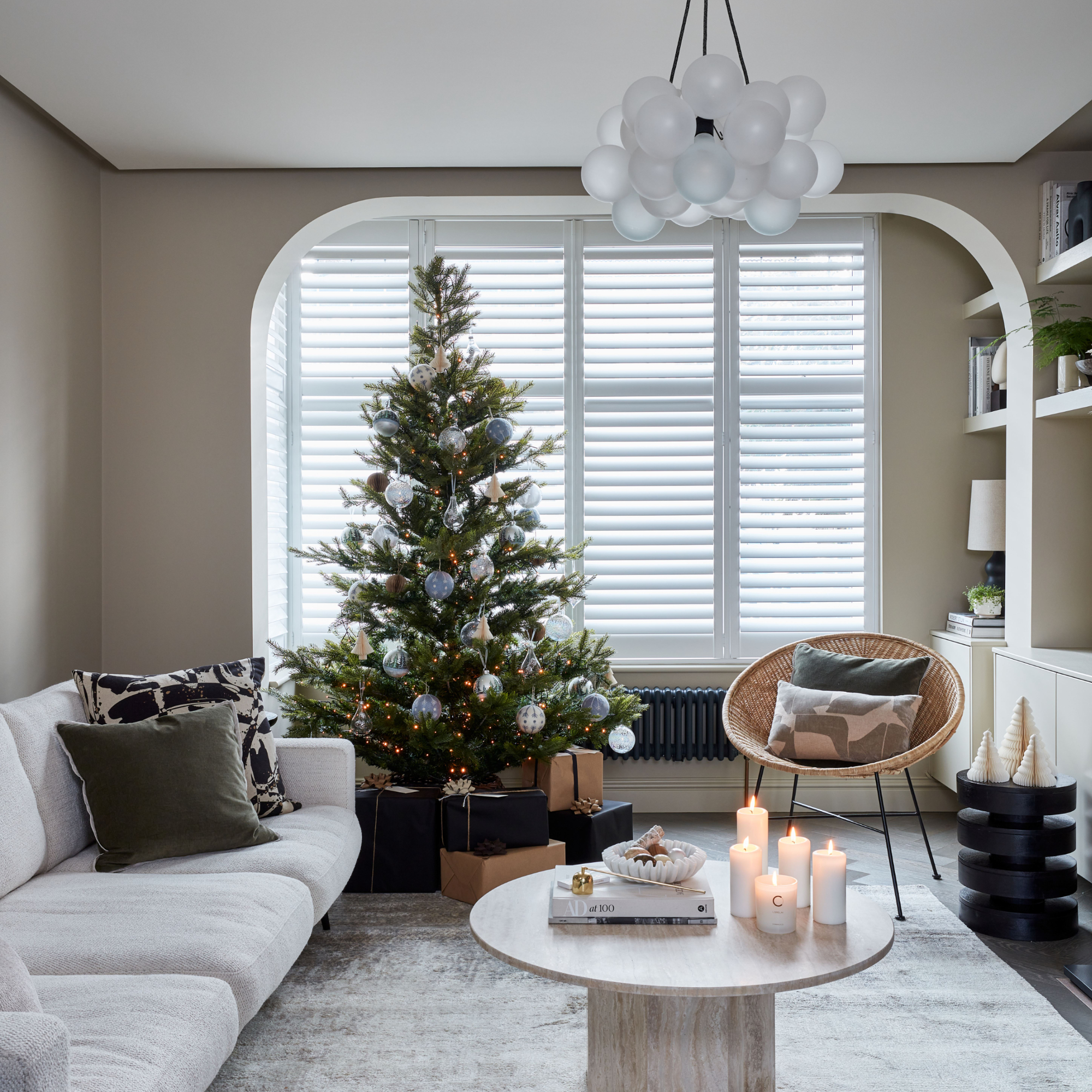
Ever wondered what the benefits of a real Christmas tree are? Yep, these festive centrepieces don't just smell and look good, but they're also doing a lot more for your health and well-being than you may think.
Let's face it. The decision on whether to go real or fake often lies with one's willingness to care for a real Christmas tree and maintain its upkeep. Otherwise, opting for an artificial tree seems to be of public favour, especially if you want as minimal faff or fuss as possible.
But, given the many benefits of a real Christmas tree, even those who have since been swayed by their best artificial Christmas tree purchase may even consider ditching the faux this season and going for the real deal.
Considering that real trees have officially landed in your local garden centres, there's no better time than now to consider your Christmas ideas. But, what exactly are those benefits anyway? We've asked experts to weigh in on the great real vs artificial Christmas tree debate.
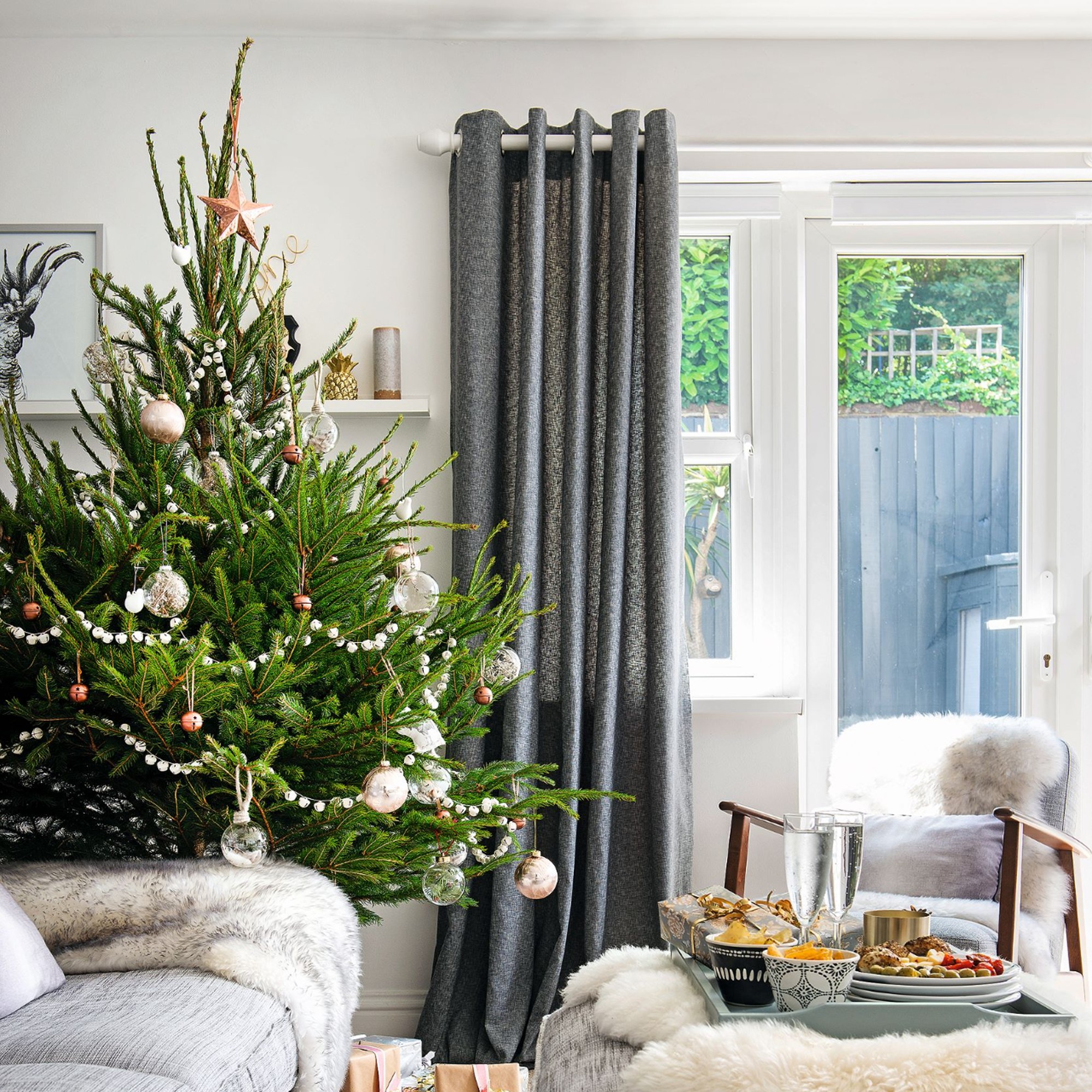
What are the benefits of a real Christmas tree?
'When purchasing a Christmas tree, the question is always, 'real or artificial?' Each has its benefits and the choice entirely depends on the needs, lifestyle, and home it will be placed in,' starts Adam Goss, seasonal plant buyer at Hillier Garden Centres.
'For many, the choice is easy, with real trees offering an abundance of both aesthetic and wellbeing benefits.' This goes hand in hand with the big fresh vs faux houseplants debate, too.
However, Dr Deborah Lee at Dr Fox Online Pharmacy adds, 'Sadly, artificial trees seem more popular than real trees, which is a shame as a real Christmas tree has so much going for it and is hands down better for the environment.'
Here's a list of the five reasons you should opt for a real Christmas tree this year, and their benefits on your health and wellbeing.
1. Bringing the outdoors indoors
'Having a real Christmas tree in the house is a way of bringing the outdoors inside. We spend 85% of our lives indoors. Bringing plants and trees into the home is a way of experiencing nature inside the home,' explains Dr Deborah.
'Indoor plants have been shown to lift mood and reduce depression and anxiety. The depth of colour and pungent aroma is a constant reminder the tree is alive and living with us indoors.'
Clinical psychologist and founder of US Therapy Rooms, Dr Daniel Glazer explains that our affinity for authentic, living plants 'stems from biophilia, humans' innate tendency to seek connections with nature and other living organisms.'

2. The aroma improves well-being
'Pine trees release a pine-fresh smell caused by a chemical called pinene. Inhaling the scent of pinene stimulates the emotional centre of the brain, elevating mood and improving well-being, explains Dr Deborah.
'Pinene has anti-inflammatory and pain-relieving effects on the human body. It can also help with memory and has antibacterial and antiviral functions.'
Dr Daniel further explains that 'on a biological level, real trees release phytoncides, airborne compounds with anti-inflammatory, anxiety-reducing effects from absorbing forest microbes.'
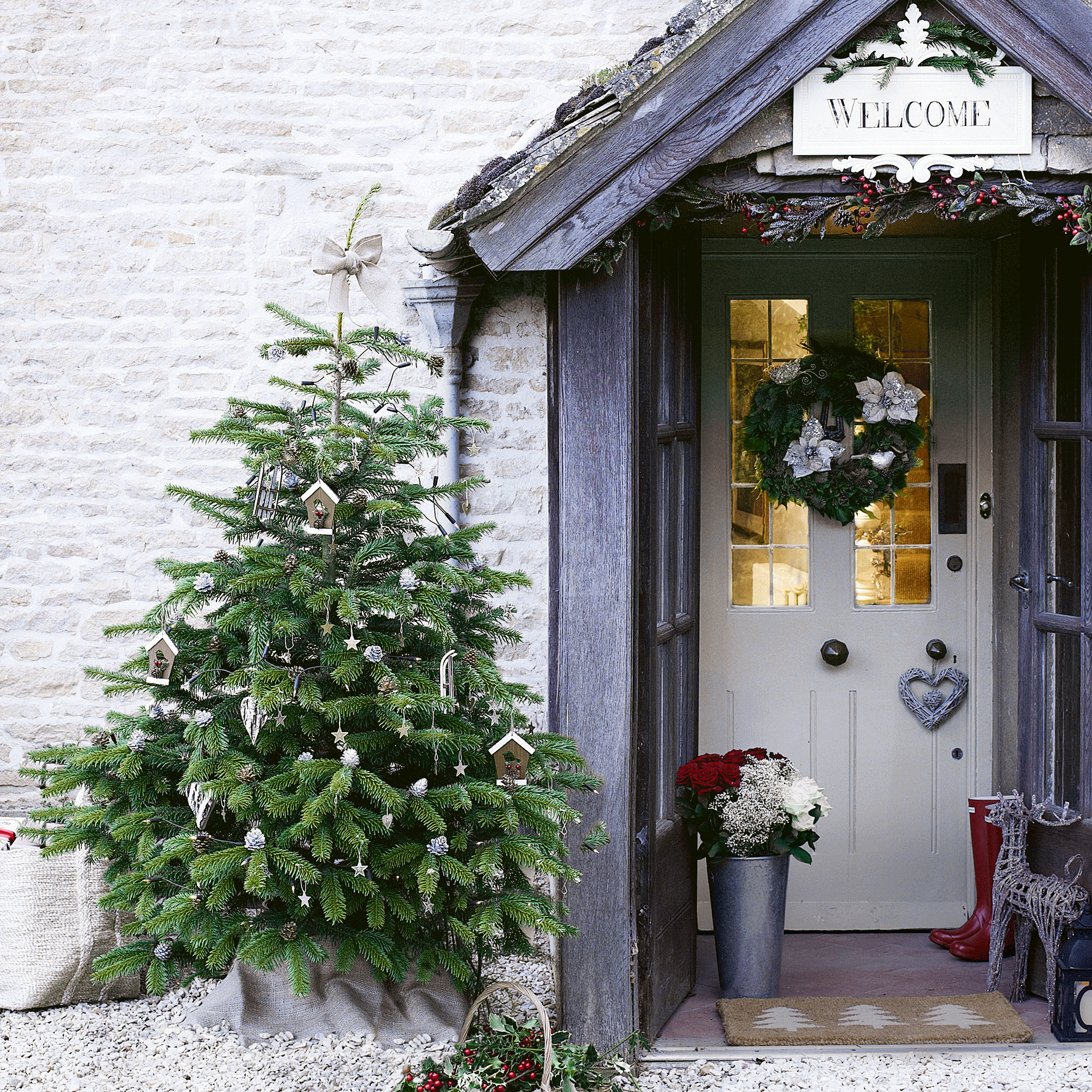
Interior designer, Tara Rodrigues, adds 'The depth of colour of real trees and the aroma engages multiples senses creating an emotional response. It can be calming and the fragrance from a Christmas tree originates from the terpene family.'
'Terpenes are aromatic natural chemicals (commonly found in plants), known to be mood-elevating, relaxing and sympathetic to our respiratory and nervous systems. You don’t get that same connection with a fake tree.'
3. Having greenery in the house improves mental health
It's no secret that real houseplants help improve mental health, therefore, the same can be said for fresh festive firs.
'In a 2015 research study, 24 healthy young men were randomised to one of two tasks; repotting plants, or a computer exercise. The 2 groups then swapped over. The results showed sympathetic activity increased with the computer task but was reduced with the potting task,' explains Dr Deborah.
'Potting was also associated with lower diastolic blood pressure. The author concluded that interaction with indoor plants lowers stress and blood pressure.'
Dr Daniel adds, 'Simply gazing at organic shapes and green tones lowers physiological markers of stress as well.'
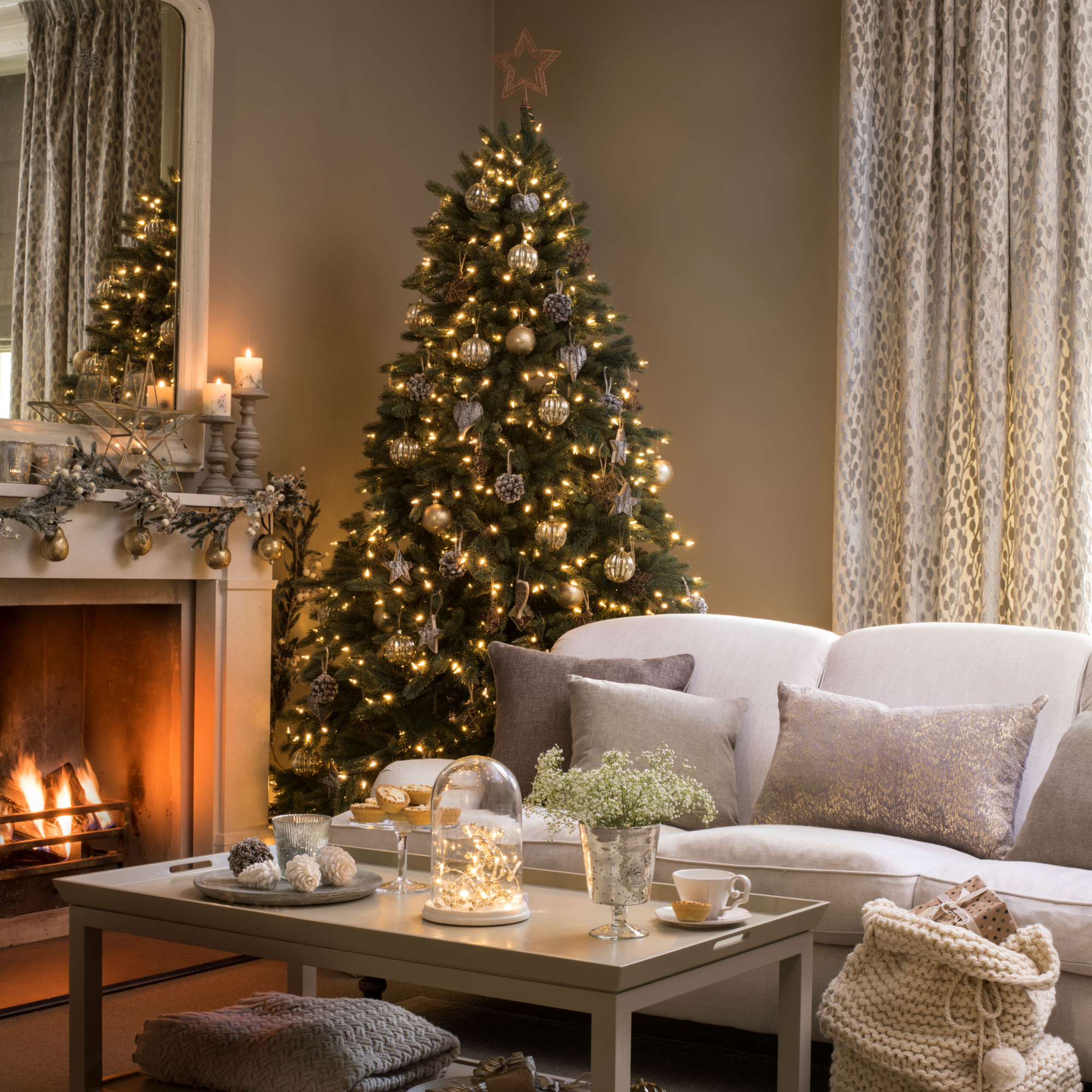
4. Plants and trees help purify the air
In the same way that houseplants have been proven to protect us from air pollutants, the same can also be said for real Christmas trees and their effect inside of our homes.
'Plants help purify the air – the proper name for this is phytoremediation,' starts Dr Deborah. 'They help improve air quality by removing from the air – mould, mildew, paint smells and pollutants such as benzene and formaldehyde.'
Dr Daniel adds, 'They also freshen indoor air by offsetting carbon emissions.' Plants take in carbon dioxide and replace it with oxygen.
Dr Deborah even goes on to explain that the soil that real Christmas trees are planted in acts as a biofilter and helps clear the air.
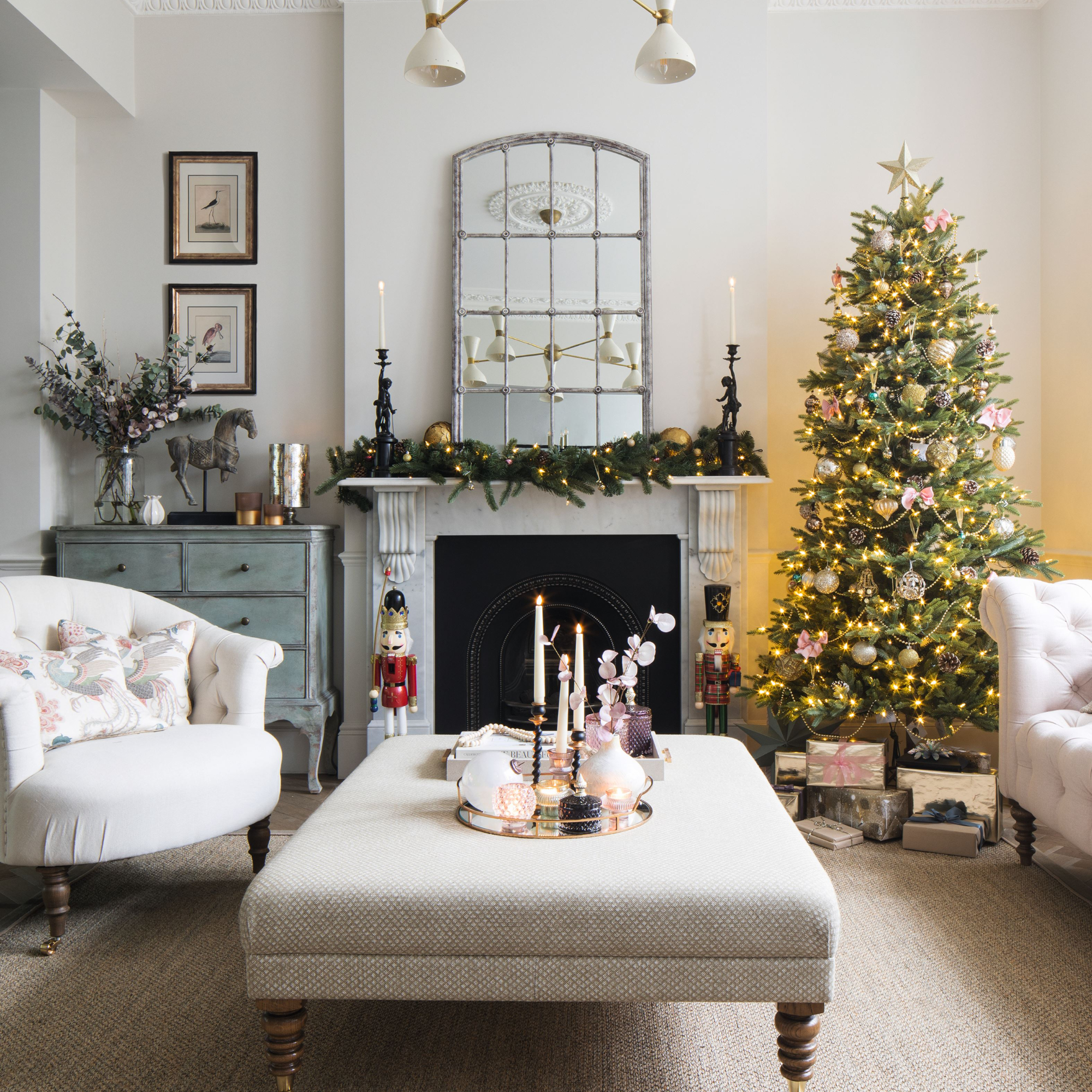
5. Keeping the tradition
And of course, more than anything, the biggest benefit to a real Christmas tree? Truly embracing the festive tradition through and through.
'Humans love keeping traditions – it gives us a sense of belonging,' explains Dr Deborah. 'It makes us feel connected to the past and gives us a sense of stability. It's also vital for our well-being that we stay connected with other human beings.'
'Keeping traditions shows personal integrity, it's a way of following a faith, it's a part of our education and is part of our role in society. Events like putting up the Christmas tree once a year are a marker of a stage of life.'
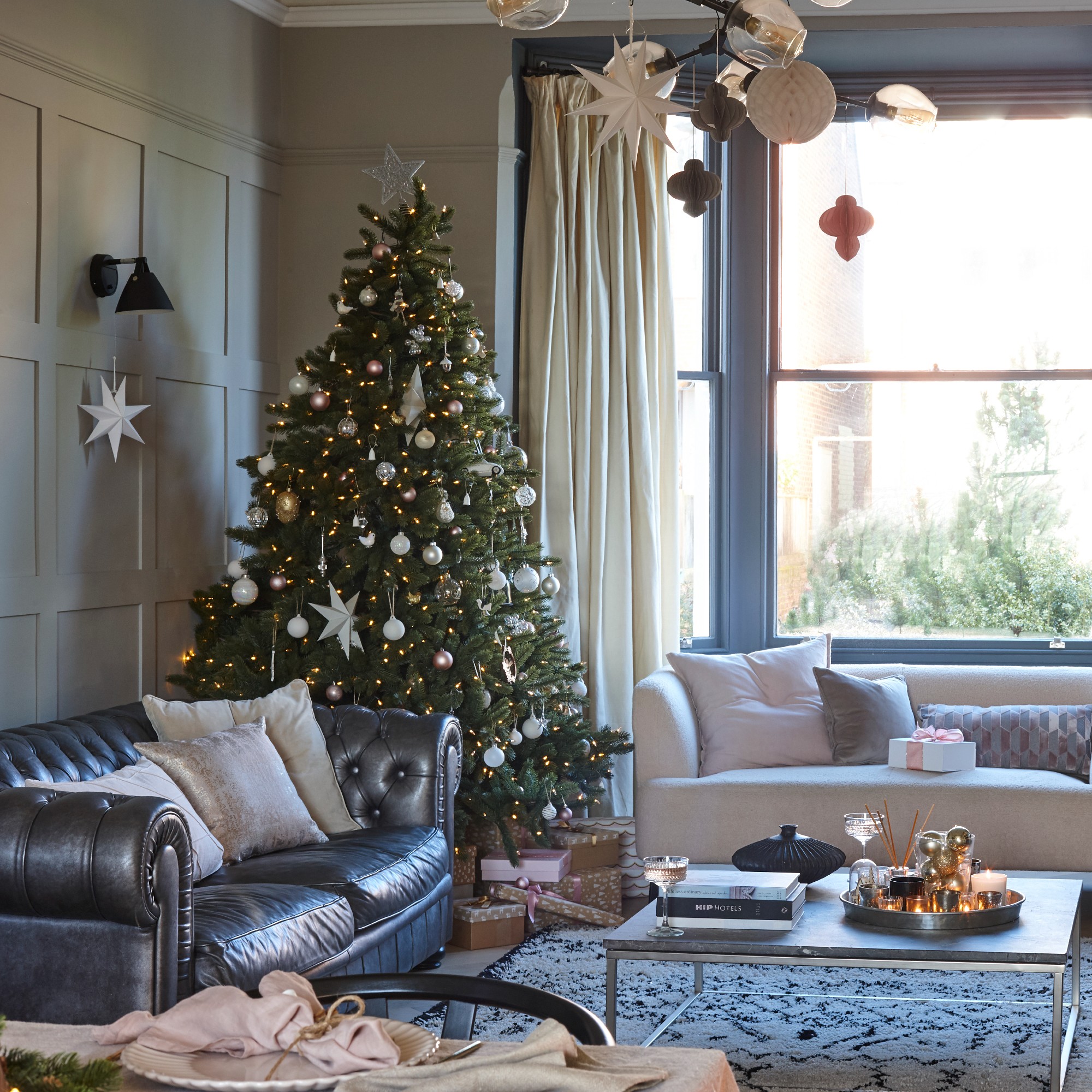
Adam at Hillier Garden Centres continues, 'Real Christmas trees often symbolise childhood nostalgia. The process of selecting, decorating, and enjoying a real tree can be a cherished annual tradition that brings together all the family. '
Would you look at that? Opting to indulge in real Christmas tree ideas isn't just something that's done for the looks of it, but it all circles back to human connection, too.
After all, we all probably have a core memory of decorating a Christmas tree from some point in our lives that will always stick with us.
FAQs
Is a real Christmas tree better for the environment?
Yes, real Christmas trees are indeed better for the environment.
'Some may worry about the environmental effect of cutting down Christmas trees however, they are sustainably grown, completely biodegradable and easily recyclable, meaning they can be repurposed for mulch after the decorations come down,' explains Adam Goss, seasonal plant buyer at Hillier Garden Centres.
'Real trees are grown for years before they are sold, and, as they grow, they absorb carbon dioxide from the air, resulting in a low, if not positive, carbon footprint. With commercial Christmas tree production and harvesting, more trees are planted than cut down – furthering the eco credentials and positive environmental impact.'
Is a real Christmas tree worth it?
Whether a real Christmas tree is worth it or not is entirely up to you and depends on your personal lifestyle.
Those who want a fuss-free centrepiece for the festive season may very well prefer an artificial tree, while those who are set on tradition and have the time to care for a real one may opt for a fresh tree.
However, if you ask us, we certainly think that real Christmas trees are worth it.
Do real Christmas trees need water?
Yes, real Christmas trees do need water.
Celebrity gardener, David Domoney, has recently shared his top real Christmas tree care tips with us and strongly urges those with real Christmas trees to ensure your tree is topped up with water so it will look fresher throughout the Christmas months for longer.
Adam concludes, 'A tree is a symbol of the magical Christmas season, contributes to creating a happy and celebratory atmosphere, and signals the upcoming fresh start of a new year.'
'Get into the Christmas spirit and visit your local garden centre to choose a tree and decorations that perfectly suit your home and decor.'







